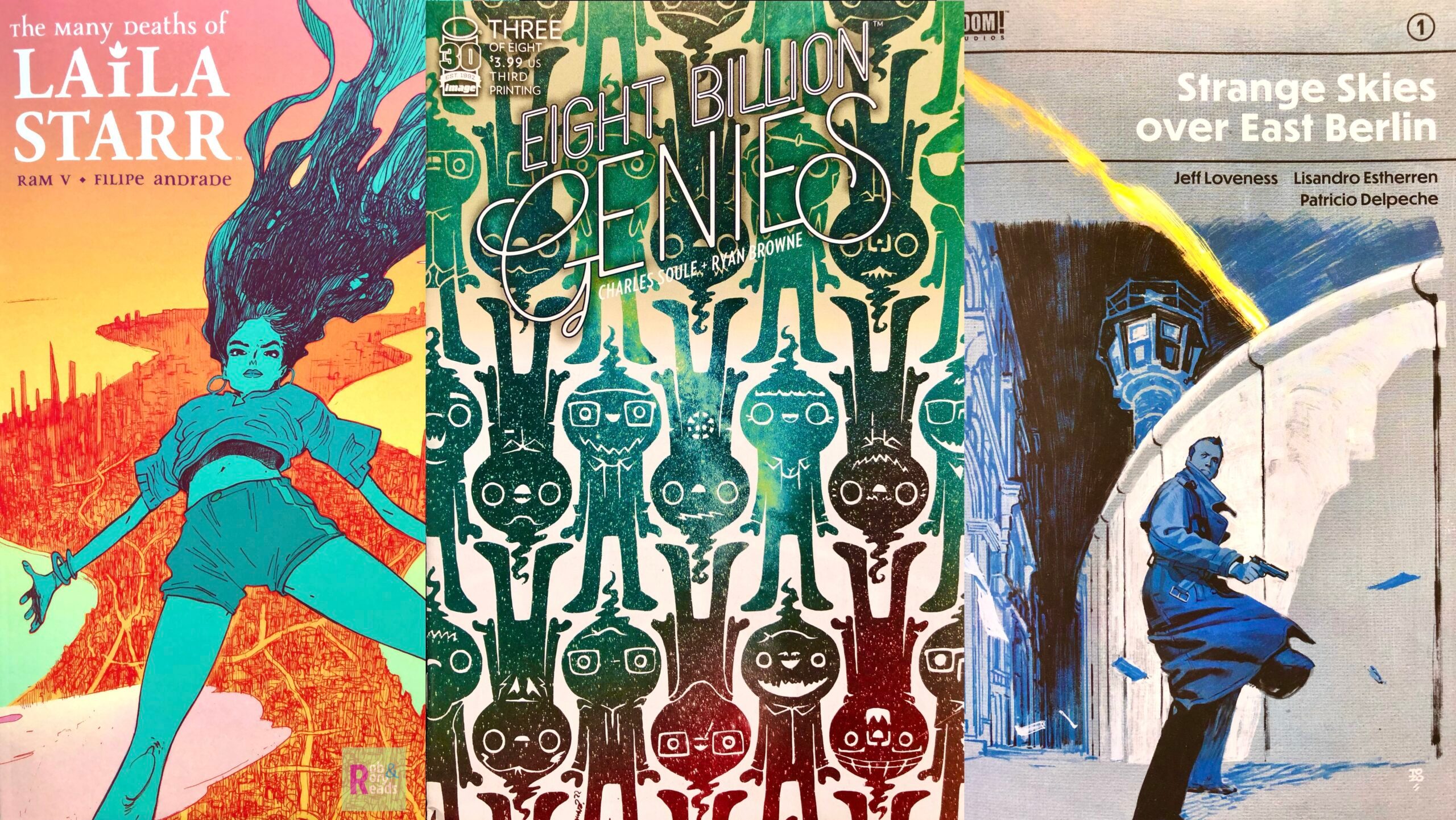SUMMARY
This is AI generated summarization, which may have errors. For context, always refer to the full article.

The proliferation of streaming services has been transforming television viewing for more than a decade. Netflix, Hulu, Amazon Prime Video, Disney+, HBO Max, and other similar services give us unprecedented control over what we watch and when we want to watch it. Prior to the advent of streaming TV, we all had to patiently wait each week for new episodes of our favorite TV shows to air (and perhaps tape them on VHS?). Now, we can choose to binge-watch an entire season in one sitting if we don’t mind eye strain and, well, an entire day passing us by.
By circumventing the traditional network TV format, these platforms also give showrunners more creative freedom, which in turn results in excellent, gripping, and yes, sometimes even controversial shows that otherwise may not have seen the light of day. Over the last couple of years, there has been a recent surge of small screen adaptations of independent comic books, that is, shows which have no connection with the Marvel Cinematic Universe or the DC Extended Universe. Streaming TV hits like Locke and Key, the Filipino comic book Trese, The Umbrella Academy, Sweet Tooth, The Boys, and, of course, The Walking Dead all have their origins from comic books.
The recent TV adaptation of Neil Gaiman’s classic Sandman and the announcement that a show based on the Eisner Award-nominated breakout hit Something is Killing the Children is in development cements the view that comic books make for excellent content on streaming TV.
Think of it this way: comic books can serve as effective storyboards. They tell their stories in a script-like format combined with artwork laid out in frames. A comic book series’ narrative structure, with each issue telling part of a larger story arc with built-in cliffhangers, lends itself to serialized release. Independent comic books, in particular, are character-driven stories which need more than the 2 to 3-hour timeframe a movie can offer, but do not necessarily require the 22 to 24-episode format that network TV traditionally employs. As such, streaming TV’s more flexible episode structure is perfect for adapting these amazing stories from the page to the small screen.
And while we are eager to watch the jaw-dropping splash pages from Marvel’s Secret Invasion, Iron Heart, or Daredevil: Born Again translated into live-action set pieces, we are as excited to see these and other independent comic books get the streaming TV treatment:
Eight Billion Genies (Image Comics, mini-series, 2022-2023)
Imagine for a moment that you have a genie which could grant you one wish. Anything and everything under the sun is fair game. Superpowers? An island paradise where you are the supreme ruler? Perhaps a cure for the world’s most debilitating diseases? Your wish is limited only by your imagination. That would be wonderful, wouldn’t it?
Now, imagine what would happen if all the eight billion people in the world have the exact same deal: their own personal genies granting them that one wish. Eight billion people all over the world – not everyone with the best intentions or anything resembling a conscience – each getting that one wish. What kind of world would that be?
In a word: chaotic.
That is the mind-bending premise of Eight Billion Genies, the hit eight-issue mini-series from the acclaimed comic book team of Star Wars: The Rise of Kylo Ren and Daredevil writer Charles Soule and Mighty Morphin Power Rangers artist Ryan Browne. Using the appearance of the genies (which they refer to as G-Day) as its narrative “ground zero,” Soule cleverly structures the story as a ripple effect, showing us how the world evolves as time passes and more people use up their wishes. The first eight minutes, the first eight hours, the first eight days, and so on.
In each succeeding issue, we see how anarchic and dangerous the world becomes as more people wish for outrageous things without regard for how these wishes would affect other people. And while Soule and Browne maintain some level of buoyancy in their storytelling (the cute-as-buttons genies do not suddenly become grotesque man-eating creatures, for instance), they inject a one-page infographic in the middle of each issue which lends the story its palpable sense of dread. This one-pager features a drawing of the Earth gradually deteriorating. At the bottom of each drawing is a tally of the global population. Each succeeding issue tracks the dramatic decrease in humankind’s numbers, implying that countless people have become casualties of the random ongoing wish-fulfillment. A sobering reality, especially given the fact that in the first eight days alone (issue number three), two billion people were lost.
Eight Billion Genies quenches cinema and streaming TV’s near-obsession with end-of-the-world stories but does so in an unconventional and gripping manner. Think of it this way: with our shared concept of genies shaped by Aladdin and similar fairy tales, who would have imagined genies granting wishes could bring about the apocalypse?
Strange Skies Over East Berlin (Boom! Studios, mini-series, 2019)
The years following the 75th anniversary of the end of World War II and the 10th anniversary of the onset of the Cold War gave us several books, films, and TV shows which delved into various historical aspects of the war: its impact on individuals and communities; the rise of the great women and men who played pivotal roles in the unfolding events; and the politico-military-economic strategies which both sides employed to outmaneuver each other.
We were also treated to numerous works of World War II and Cold War-inspired novels and shows of historical fiction and alternative history, such that these have become veritable sub-genres. Amazon Prime Video’s The Man In the High Castle, for instance, gives us an unnerving glimpse of a world where Hitler and the Axis Powers won the war. Garth Ennis, Steve Epting, and Elizabeth Breitweiser’s excellent comic book Sara and Kate Quinn’s moving novel The Diamond Eye both shine a much-deserved, albeit fictionalized, spotlight on the women who valiantly fought in the trenches.
Jeff Loveness and Lisandro Estherren’s disquieting and thought-provoking mini-series Strange Skies Over East Berlin wades into the waters of alternative history as it sends Herring, an American spy, headlong into Soviet-controlled East Berlin to ferret out more information about an allegedly powerful weapon the USSR may be harnessing. But in the world of high-stakes espionage set during the years of the Cold War’s deepest frost, finding the truth can be both near-impossible and deadly.
The story is complemented by the frantic and wavy lines of Estherren’s art, driving home the fact that the truth that Herring is pursuing is marked by uncertainty and relativity. Patricio Delpeche’s colors, with splashes of primary colors mixed in with plenty of shadows and some occasional slight scratching, evokes a vintage – but vivid – feel.
Strange Skies Over East Berlin dives into tense action from the very first page as we find Herring in a rescue mission which goes awry. As the story progresses, Loveness significantly raises the stakes. We discover that while Herring has long been covertly embedded in the East German secret police, he fears it is just a matter of time before his cover is blown and his safety is compromised. But despite his initial protestations, Herring goes deeper into enemy territory to unearth more information about this new Soviet weapon. In the process, he encounters an otherworldly presence and comes face to face with a truth he has long tried to forget.
The Many Deaths of Laila Starr (Boom! Studios, mini-series, 2021)
What if the totality of the human experience was managed by a supernatural corporation? What if birth, love, hate, desire, and death are actual persons – employees of this corporation who are all subject to periodic performance reviews or even retrenchment and redistribution? Now, what happens if death gets fired for being rendered obsolete by the birth of a child who can bring about immortality?
These are the deep philosophical issues that underpin Ram V, Filipe Andrade, and Inês Amaro’s innovative and absorbing tale. Mixing elements of Hinduism, Buddhism, and Christianity, The Many Deaths of Laila Starr is an edgier, much less goofy and much more circumspect version of Netflix’s The Good Life.
Ram V is no stranger to crafting engaging allegorical tales. His critically acclaimed mini-series These Savage Shores (2020) is a fresh rendering of the vampire mythos set in colonial India. In The Many Deaths of Laila Starr, his thoughtful take on an otherwise morose subject matter allows us to look death and the fear of being forgotten squarely in the face. His dialogue borders on the poetic and, combined with Andrade’s flowing art and Amaro’s rich, India-inspired color palette, this mini-series strikes a melancholic mood in the best sense of the word.
The title itself is an ingenious play on words. This is a story of Death experiencing death – and doing so many times over. With each cycle of death and resurrection, Laila Starr, who is the human embodiment of the Grim Reaper in this comic book, inches towards the truth about the birth of the child gifted with immortality and what this means for her own existence.
Despite the current mass appeal of comic book movies, not everyone who watches the movies read the comic books on which they are based. This is especially true of independent comic books, which often feature stories minus the superheroes which have powered Marvel and DC’s resurgence in cinemas.
Streaming television offers an excellent opportunity for these and other remarkable comic book titles to reach a much-deserved wider audience. By providing this platform, non-comic book readers are treated to amazing stories which they may never otherwise have heard of.
In doing so, these streaming TV shows serve to encourage more people to read comic books, enabling them to discover this wonderful medium that has provided us compelling, insightful, and entertaining stories for decades. – Rappler.com
Rory J. Bolivar is a registered microbiologist, educator, and writer.
Robespierre L. Bolivar is the recipient of the Gawad Mabini, one of the highest Presidential honors bestowed upon Filipino diplomats.
Follow them on Facebook @robroryreads and visit their website at robroryreads.wixsite.com/bookreviews. Their new book, Thoughts From Our Couch, a collection of their essays on life, books, movies, and popular culture, is now available on Amazon.com worldwide.
Add a comment
How does this make you feel?

![[Only IN Hollywood] Ansel Elgort, Ken Watanabe, creators on addictive ‘Tokyo Vice’ season 2](https://www.rappler.com/tachyon/2024/04/tokyo-vice.png?resize=257%2C257&crop=233px%2C0px%2C720px%2C720px)
![[Only IN Hollywood] Scene-stealing cat almost runs away with ‘Ripley’](https://www.rappler.com/tachyon/2024/04/RipleyHisNameIsKingAndHeReignsInRipley.GiveHimTheBestCatActorAwardAlreadyCreditNetflix-1.jpg?resize=257%2C257&crop=0px%2C0px%2C720px%2C720px)
![[Only IN Hollywood] She sings, loves paintings of herself, and flees a palace – sound familiar?](https://www.rappler.com/tachyon/2024/03/TheRegimeKateWinslet2.jpg?resize=257%2C257&crop=252px%2C0px%2C752px%2C752px)

There are no comments yet. Add your comment to start the conversation.